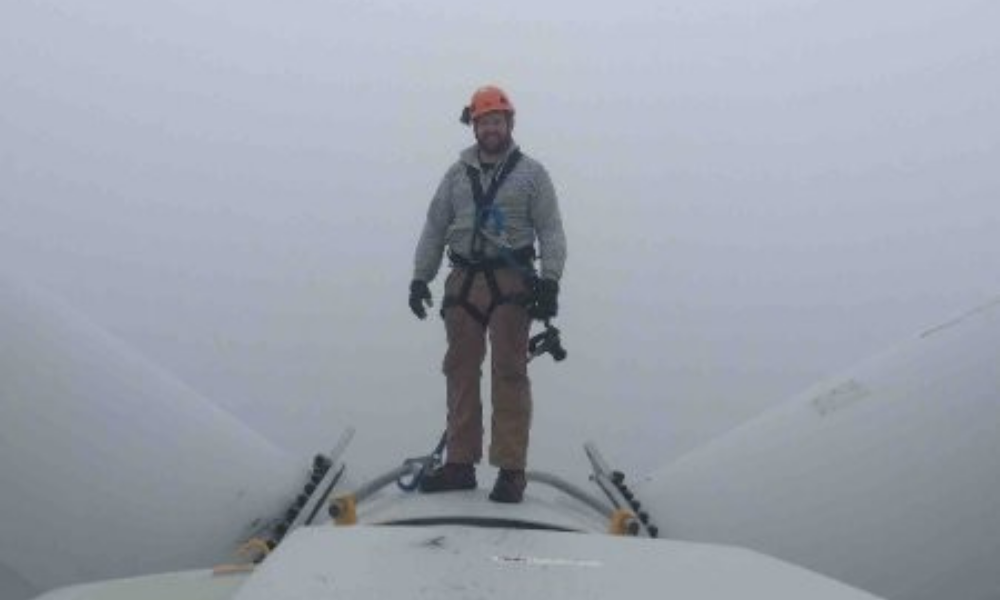Engaging a room and gauging attention spans is essential part of on-site safety, explains construction expert

Scaffold safety, trenching, excavation – when it comes to construction safety, there are so many moving parts. This is why training and education are such integral parts of jobsite safety. And training is not as easy as it seems; being a safety instructor takes skill and experience.
Doug Legg, Service and Training Manager, Rubicon Safety, says that there’s more to an instructor than just knowing the information. "You have to be the kind of person who can run a room and can bring the information to life.”
Being able to bring information to life is key. And one of the most challenging parts of being an instructor is when you have a class full of people that don’t want to be there, says Legg, who does a range of training including working at heights, tower communication rescue training, tower crane rescue training, wind turbine rescue and confined space.
Subscribe to our free newsletter to stay up-to-date with the world of safety.
So how does he deal with this? “You have to show them something they’ve never seen before, or you have to find a way to engage with people.” Legg says that as an instructor, it’s always good to have some information in your back pocket and be up to date on current events to be able to liven up a room.
In addition, “you’ve got to be able to gauge people, and their attention spans. And there’s different types of learners,” he says. “There’s different rooms, and you’ve really got to read who your audience is.”
To remain competent as instructors, Legg says that you need to try and get the relevant experience too, “because if you only teach the information, it’s very difficult to learn all those little nuances and things about why you’re doing that.”
Those who teach also need to have a solid grasp of the jobs they engage with and the tasks they are teaching. “I also get to the apply the information that I’m teaching, I don’t just have to teach the information,” says Legg. This is a perk of his role, and adds a lot of legitimacy when he is teaching.
Legg discovered his love of training as a teen. When he was 18 years old, he joined his local volunteer fire station. The trainer says that he was essentially given a paper and told to show up before he had had any kind of training.
“On one of my first calls, it was a bad emergency – and I was way out of my league, I had no idea what I was doing.” Back then, says Legg, that’s just how it was, “you were literally baptized by fire.”
Another issue was that, due to voluntary nature of the role, a lot of the firefighters had other roles or full-time jobs outside of volunteering, so it was very hard to set up a lot of training.
Legg says that he himself was lucky, because one of his good friends at the time – who was aspiring to be a full-time firefighter – took him under his wing and trained him, and Legg found that he really enjoyed learning. “I quickly realized that I was a sponge for that type of information. I was able to pick up on things where others might struggle.”
Thanks to his natural aptitude, Legg eventually became the training officer for his fire station.
He discovered a love of public speaking, and being with people – and a love for giving back to the community. “And as I got older, I wondered how do I make a career out of this? I figured, what better way to do that then by breaking into the health and safety community.”
By getting into OHS, Legg says that he is able to impact the community on a broader scale. He has now been with Rubicon Safety for almost 10 years.
“I pride myself on getting good reviews about our training, because I feel like I’m making an impact.” Legg says that people need to walk away from training feeling engaged, because if they think that training was fun then they are going to want to do it.
“Safety isn’t something I do, it’s part of who I am,” says Legg. Having extensively travelled throughout the years, he hopes that he has left somewhat of a safety footprint. “I feel I’ve maybe made an impact there somewhere along the line, and that’s what keeps me going.”





